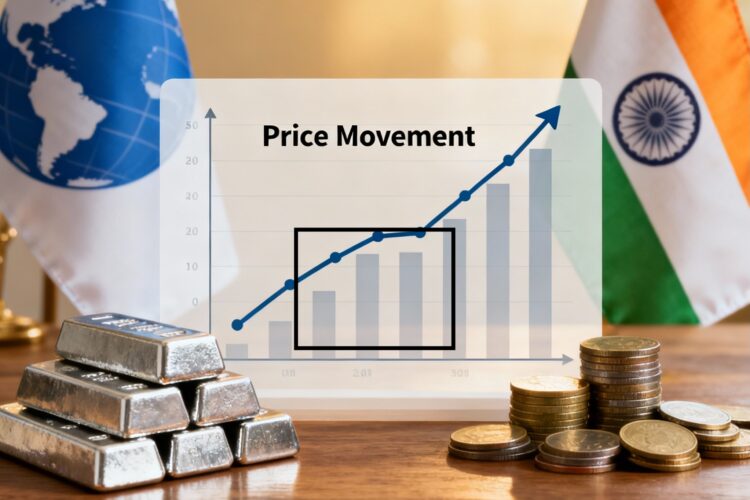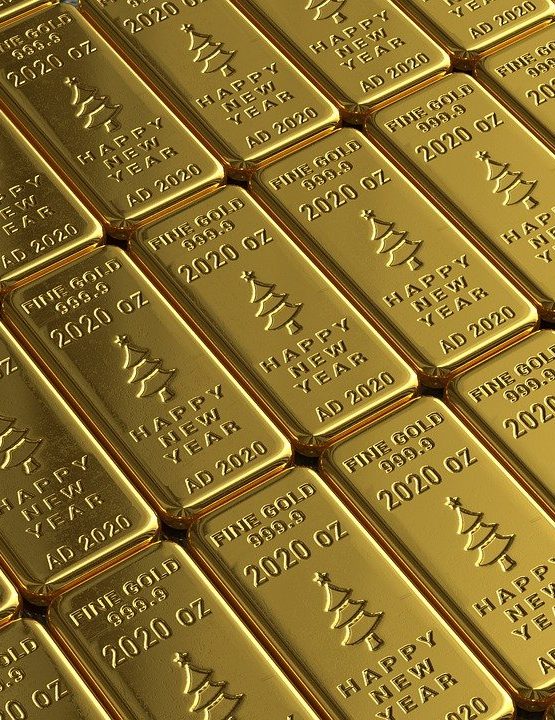Silver reached $51 per ounce in October 2025, breaking records last seen in 1980 and 2011. The last two times, silver crashed badly afterward falling by 78% and 67% respectively. Things are different this time.
What Happened Before
1980: The Hunt Brothers Manipulation
Two billionaire brothers, Nelson and William Hunt, tried to corner the silver market. They bought so much silver that prices shot up to $50. But it was artificial, they were manipulating the market. When regulators stepped in by drastically increasing the margin requirements, silver crashed 78%.
2011: Financial Crisis Panic
After the 2008 financial crisis, investors panicked and bought precious metals as safe havens. Silver hit $49.82, but this was mostly speculation. When the Federal Reserve changed policy by slowing down the QE programs and markets calmed down, silver fell 67%.
Why 2025 Is Different
1. Real Supply Shortage
Unlike before, there’s a genuine shortage of silver now. For eight straight years, the world has used more silver than it produces. This isn’t manipulation or speculation, it’s basic supply and demand.
If a grocery store sells 1,000 of a product daily but only gets 800 from suppliers, eventually the store runs out. That’s what’s happening with silver globally.
2. Massive Industrial Demand
Silver isn’t just for jewelry anymore. Today’s technology needs huge amounts of silver:
- Solar panels: Every solar panel needs silver for electrical connections. Solar demand increased from 60 million ounces in 2015 to 232 million ounces in 2024
- Electric cars: EVs use twice as much silver as regular cars for their electronics
- Smartphones and computers: All electronic devices need silver for circuits
- AI and data centers: The boom in artificial intelligence requires massive amounts of electronic equipment, all using silver
In 2025, industrial use accounts for 59% of all silver consumption. This creates a floor under prices because factories need silver regardless of investment trends.
3. The Debt Crisis
The biggest difference between 1980 and 2011 is the scale of government debt:
- 1980: US debt was $0.91 trillion (32% of the economy)
- 2011: US debt was $15.2 trillion (99% of the economy)
- 2025: US debt is $37.88 trillion (119% of the economy)
Similar to the US, most countries are facing an increasing debt burden. This massive debt means governments can’t raise interest rates like they did in 1980 (when rates hit 20%). High rates would make debt payments impossible. So central banks are trapped into keeping rates low, which helps precious metals.
4. Currency Problems
The US dollar has lost 40% of its buying power since 2000. When money loses value, people turn to real assets like silver. The dollar index fell 11% in the first half of 2025 – its biggest decline since 1973. Indian Rupee has depreciated even more, around 80% during the same time period.
5. Global Uncertainty
Unlike the focused problems of 1980 or 2011, today we have multiple crises:
- Wars in Ukraine and the Middle East
- US-China tensions
- Global supply chain disruptions
- Energy crises
This creates ongoing demand for safe-haven assets.
India: The Game Changer
India has become the world’s biggest silver consumer, and what’s happening here is remarkable:
Investment Boom
- Indians invested ₹8,603 crore ($1 billion) in silver ETFs in just 8 months of 2025
- This is three times more than gold ETF investments
- Silver prices in India hit all-time highs of ₹1,800 per 10 grams
Industrial Growth
- India plans to install 100 GW of solar power by 2026, needing 25-30 million ounces of silver
- Electronics manufacturing is booming under government incentive schemes
- The electric vehicle market is growing at 49% annually
Supply Squeeze
- India normally imports 5,500-6,000 tons of silver annually
- Physical silver in India now trades at 5-12% premium over global prices
- Some ETF companies have stopped taking new investments due to silver shortages
What Makes This Rally Sustainable
Physical Scarcity
Unlike paper speculation, today’s silver shortage is physical. Major exchanges like COMEX have seen their silver inventories drop to multi-year lows. When someone tries to manipulate prices downward with massive short sales (as happened in July 2025 with 483 million ounces sold in one day), prices bounce back quickly.
Industrial Foundation
About 700 million ounces of silver are used industrially each year. This demand is steady and growing, unlike investment demand, which can be volatile. Even if investment demand falls, industrial demand provides support.
Limited Supply Response
Unlike other metals, you can’t just “mine more silver” when prices rise. Approximately 70% of silver is obtained as a byproduct of mining other metals, such as copper and zinc. So silver supply depends on demand for other metals, not silver prices alone.
Could Silver Still Crash?
Yes, nothing is certain in markets. Silver could still fall if:
- A major recession cuts industrial demand
- New technology replaces silver in key applications
- Central banks somehow manage to raise interest rates significantly
- Major economic reforms reduce global tensions
But the key difference is that even in these scenarios, the structural supply deficit would likely continue. Industrial demand has created a much higher “floor” under silver prices than existed in 1980 or 2011.
The Factor of Indian Market
India’s role cannot be overstated. As the world’s largest silver consumer, India’s shift from purely ornamental use to investment and industrial demand creates a new foundation for the market. When 1.4 billion people in a rapidly growing economy discover silver as an investment, it changes the entire global dynamic.
Conclusion
The 2025 silver rally is built on fundamentally different foundations than previous spikes:
- Real shortages instead of manipulation
- Industrial necessity instead of just speculation
- Massive debt preventing aggressive interest rate rises
- Multiple global crises creating sustained uncertainty
- India’s transformation into a silver investment powerhouse
While silver will always be volatile, the underlying factors supporting higher prices appear more durable than in 1980 or 2011. The question isn’t whether silver will fluctuate, it will. The question is whether we’ve entered a new era where silver’s baseline price is permanently higher due to structural changes in technology, finance, and global economics.
For the average investor, this suggests silver may offer better long-term protection against inflation and economic uncertainty than it has in decades. But like all investments, only invest what you can afford to lose, and consider silver as part of a diversified portfolio rather than putting all eggs in one basket.
References:
- https://finance.yahoo.com/news/us-national-debt-nears-38-094946480.html
- https://www.cruxinvestor.com/posts/surging-industrial-demand-tightens-silver-supply-triggering-strategic-repricing-in-2025
- https://www.hindustantimes.com/business/silver-etfs-shine-in-india-as-investors-chase-record-returns-amid-pricey-gold-101760087440077.html
- https://discoveryalert.com.au/news/indias-silver-import-2025-investment-demand-surge/
- https://www.hindustantimes.com/business/silver-etfs-shine-in-india-as-investors-chase-record-returns-amid-pricey-gold-101760087440077.html
- https://www.reuters.com/world/china/indias-silver-imports-gain-momentum-strong-investment-demand-2025-09-16/
- https://www.fortuneindia.com/personal-finance/could-2025-be-the-year-silver-takes-center-stage-as-demand-surges-acrossindustries/121787
- https://www.cruxinvestor.com/posts/surging-industrial-demand-tightens-silver-supply-triggering-strategic-repricing-in-2025
Disclaimer:
I provide the information and my views on the website only to educate people, new investors, and stock market enthusiasts on equity and other market investments. Please consult a SEBI registered financial advisor before making any investments in the stock or commodity markets. In case of any queries, you can contact me on Contact Form or email: admin@valueinvestingonline.in.




